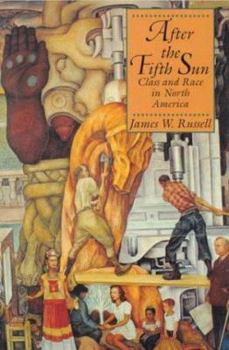After the Fifth Sun: Class and Race in North America
Russell explores how patterns of class and racial inequality developed in the US, Mexico, and Canada from 1521 to the present. Subjects include class, race and colonial reconstruction; contemporary... This description may be from another edition of this product.
Format:Paperback
Language:English
ISBN:0130362379
ISBN13:9780130362377
Release Date:January 1994
Publisher:Prentice Hall
Length:216 Pages
Weight:0.75 lbs.
Dimensions:0.5" x 6.1" x 9.0"
Related Subjects
Cultural Politics & Social Sciences Social Science Social Sciences Specific DemographicsCustomer Reviews
2 ratings
Great US/MEXICO/CANADA Study
Published by Thriftbooks.com User , 24 years ago
Russell puts together a wounderful analysis of class and race in a cross-national perspective. It is of particular interest to those who study North America in an international context. I recommend it to many of my students.
A great introduction to race and class in Mexico, Canada and
Published by Thriftbooks.com User , 25 years ago
This is a good book for students or others who want to understand issues of race and class in either the United States, Canada or Mexico. What I particularly like about the book, which I have used in my race relations classes, arre two things. First, it is comparative, allowing the reader to understand the significance of race and ethnicity precisely because we can directly compare the experience faced by minorities in three societies at once. Secondly, it is historical. Rather than giving us just a bunch of statistics about what racial groups earn more than others (which is there), it explains WHY and HOW racism emerged differently in each society beginning with the process of colonialism. (The title refers to the belief of the Aztecs (in Mexico) that the world had lived through four suns, after having been destroyed by the Gods three times. They expected a last destruction before the arrival of the fifth sun, and many believed that the Spanish conquest with its ordeals of pestilence and slavery was that destruction.) What is certain is that racism does exist in all three, but in very different ways. The rigid color bar of the United States is completely absent in Mexico and rarely applied in Canada. Russell shows how the economic and historical peculiarities of each society led to very different definitions of the significance of race. On the down side the book is somewhat expensive, since it was written as a textbook. It is also a bit too textbooky. It is very short for a textbook, however, which is both good and bad. Sometimes I find myself wanting more details, but there are relatively few places where I am bored. I feel it is better to leave a reader wanting more information than less, so this isn't too bad. Overall, I would rate it a great introduction to these topics. Its comparative basis makes it interesting to students of any one of the three nations covered while also giving its subject matter (race and class) greater significance.






